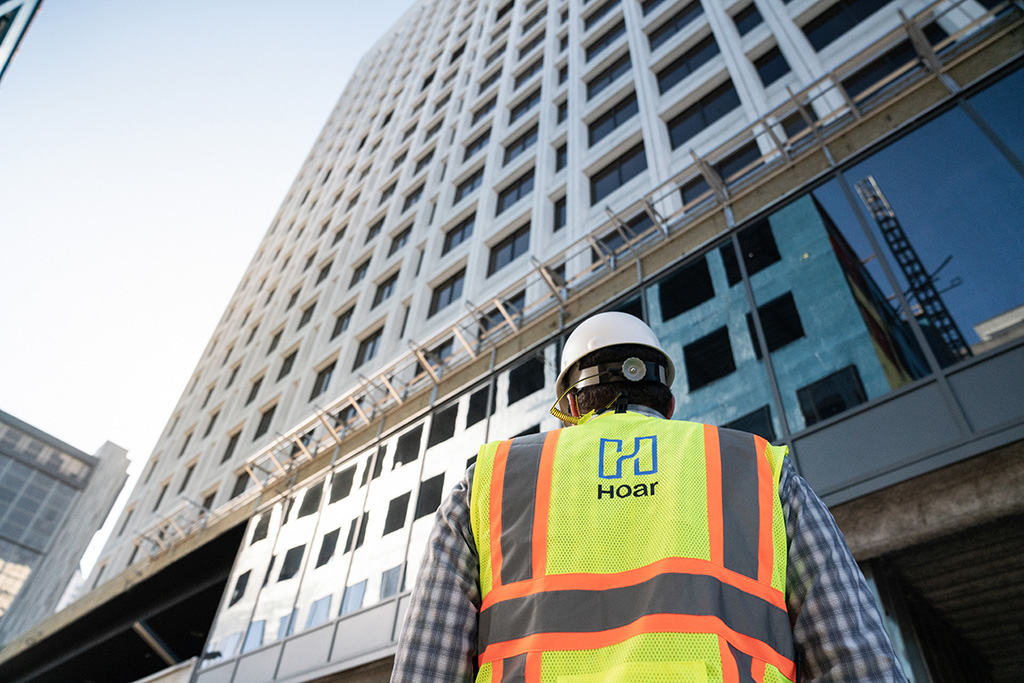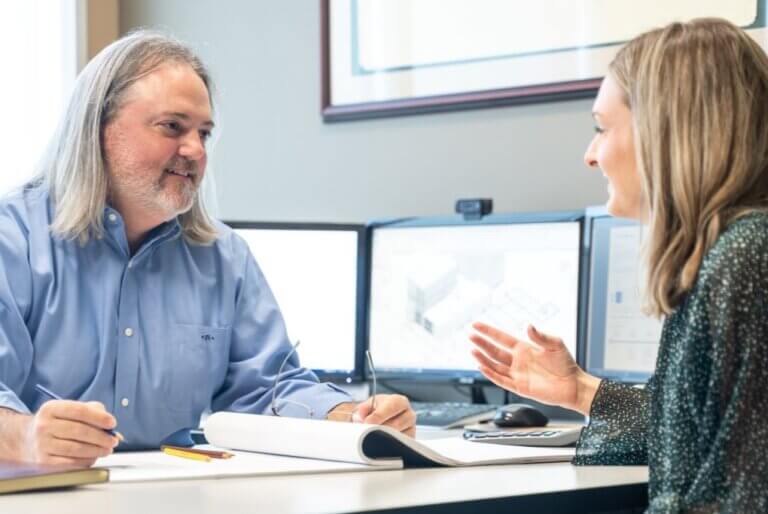
I’ve talked a lot about the pride I have felt watching our project teams, design partners, clients, and trade partners evolve and adapt during unprecedented challenges in our industry. Sky-high construction costs, historic lead times, and a critical labor shortage. I wish I could say those challenges are behind us, but we know they’re not. Construction costs are still up. If they’re not rising, they remain well above pre-pandemic pricing. But I think our industry is in great shape to tackle these ongoing challenges head on. I see the past two years as a learning curve. We were breaking ground on projects in 2020 when we had to find ways to keep our teams working safely during the pandemic. By 2021, we were experiencing historic pricing surges in lumber and steel. But at the onset of 2022, we are breaking ground on new projects, armed with tested and proven tactics to overcome cost hikes, long lead times, and health and safety risks to our teams.
I’d like to first take a quick look at where construction costs are right now, since the Bureau of Labor Statistics recently released projections based on January’s numbers.
Lumber
We’ve been talking about lumber since it reached its peak back in May 2021. In the fall of last year, we were cautiously optimistic that prices seemed to be falling. But that brief drop in lumber costs was short lived. Lumber commodity pricing is currently tracking at 236% above pre-pandemic prices. Future projections don’t show any indication of lumber returning to pre-pandemic pricing for the remainder of 2022.
Steel
Steel remains an incredibly volatile material. By the end of 2021, steel products were up about 150% from pre-pandemic prices. In the first two months of 2022, we’ve seen some stabilization in steel pricing —maybe even a modest decrease — but the prices are still extremely high compared to where they were early 2020. We’re also still experiencing long lead times on all steel products, especially joists.
Copper
This is a material we haven’t discussed much in the past, but we’ve seen a steady rise in the cost of copper from April 2020 to May 2021. Costs for this material have also stabilized recently but are still 70% higher than they were pre-pandemic. The escalated cost of copper impacts the cost of heating and plumbing materials, electrical wiring and equipment, HVAC systems, and much more.
Moving Forward
Our industry has been dealing with the challenges of rising construction costs and long lead times for two years now. Our company personally has had success partnering with design teams early, hiring trade partners during the design phase, and selecting and securing materials as soon as possible to lock in prices and avoid delivery delays. We’ve had to find ways to adapt because demand for new development has remained strong. This is especially true in the multifamily market as people and businesses continue to migrate to the southern region. In 2021 alone, for the 5th year in a row, more than 330,000 apartments were planned to be built across the country. The multifamily demand is especially high across the Sunbelt. Dallas, Houston, Austin, Atlanta, Charlotte, Orlando, Tampa, and Raleigh all made the top the list with the most new rental units. It’s not just multifamily that is active in this part of the country. According to data from the Architectural Billings Index, the South has seen the most well sustained pandemic recovery of any of the US regions.
The industrial industry continues to boom with new distribution centers, warehouses, and manufacturing facilities breaking ground all the time. The demand in this market sector is strong, despite the fact warehouse-type projects were impacted the most severely by construction cost escalation. Steel, which remains a volatile and costly material, makes up a large percentage of these projects’ scope, so the relative impact of steel price increases is very noticeable. In fact, overall industrial warehouse project costs increased 20-40% over the last 12 months.
Rising or stagnant construction costs are a challenge. But our industry has proven we are capable of remaining active and resilient despite the ongoing volatility in the supply chain. We’re not the same industry we were in 2020. We know the way to keep a budget reliable is to hire design teams, general contractors, and key trade partners as early in the design phase as possible. Clients who have historically followed the traditional “hand-off” method of design-bid-build are working with us to partner with design teams early and hire trade partners during the design phase. The days of design-bid-build are gone, or should be, if you want your project team to be able to lock in prices, secure materials, and deliver your project within budget and on time. It takes a significant planning effort for all teams involved and earlier decisions from clients. If we as an industry embrace and continue this collaborative approach to building, we will continue to thrive and deliver value despite cost and supply challenges — which show few signs of relief for the remainder of 2022.

